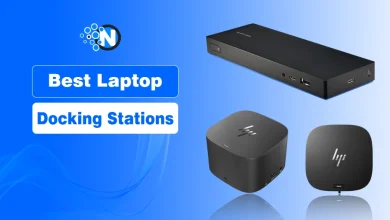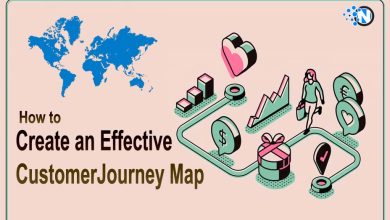Running a business, especially something relevant to e-commerce, managing products is one of the most important points. Each product has to be managed and listed properly in order to persuade online store visitors to make a purchase.
PIM (Product Information Management) and DAM (Digital Assets Management) systems are being heavily used for assistance in this regard. Companies now understand the importance of these systems and are integrating together for a better workflow.
But how does integrating PIM and DAM systems actually benefit a company? That’s what we are going to explore together in this article. Here, I’ll walk you through the 10 best benefits of integrating PIM and DAM systems. Let’s start.
10 Benefits of Integration PIM And DAM Systems
Integrating a PIM system, such as the Contentserv PIM, and a DAM system does more than just manage product data easily. They, in fact, change the entire way your employees manage digital product data. The following benefits of this integration will help you understand this stance better:

1. Centralized Product Data & Digital Media:
The biggest, and the most obvious, benefit of integrating PIM and DAM systems is getting a centralized place to handle product information and media. In e-commerce and retail, product listing includes both digital media (such as pictures and videos) and product data (price, descriptions, tags, etc.)
Utilizing both PIM and DAM systems separately makes everything confusing. When these systems are integrated together, employees can access and manage product data easily.
2. Fast Product Launches:
Another benefit of integrating these systems is fast product launches. In e-commerce, introducing a product quickly in the market can make all the difference in the world. It beats competitors and allows the company to take a large share of the consumer base.
The integration between DAM and PIM makes it possible.
Both systems play their roles perfectly to make it happen. They enable employees to work better and launch products in the market before the company’s competitors.
How Does It Happen?
- DAM offers instant access to digital assets so that employees can use them for listing.
- Similarly, PIM offers updated and accurate product information.
- Both factors are combined instantly to create proper listings.
- When proper listings are completed, the product is launched in the market.
3. Better Omnichannel Distribution:
Better omnichannel distribution has become a lot easier for online businesses because of the integration of PIM and DAM systems.
An e-commerce or retail store usually does not rely on only one platform. Instead, it focuses on multiple business channels, such as Amazon, eBay, and private business websites.
With the integration of DAM and PIM systems, companies are able to ensure accurate information is distributed on each platform. Both descriptive and visual data are uploaded on each channel properly so that visitors see the right type of product listings.
Why Omnichannel Distribution Matters?
- It enables companies to access a wider audience.
- It helps achieve brand consistency by adding similar listings on every platform.
- Customer experience has improved a lot.
4. Better Teamwork:
The integration of both of these product-related systems improves teamwork as well. Working in big companies requires multiple people to work on the same listing. It is a little inconvenient when both DAM and PIM are separated.
Their combined integration makes it possible for team members to access and use product data instantly. Everyone can see the what changes and updates are being made in the product. As a result, they get to perform their duties accordingly and bring the best results possible.
A Better Teamwork Results In A Breakthrough:
- Collaboration helps everyone stay on the same page for better work.
- It eliminates any type of miscommunication.
- The teamwork becomes smoother since there are less data silos.
5. Cost-Saving:
Some people may think that combining both PIM and a Digital asset management tool costs a lot. It may be an expensive procedure, but it helps save costs overall.
Managing separate systems for product information and media requires putting in extra work. It may even require more resources and higher maintenance requirements. As a result, a company can end up spending a lot on both systems.
It can be avoided by integrating both systems. It results in better productivity and straightforward maintenance which helps save money.
Tips For Better Cost-Saving:
- Go for systems that can easily be scaled according to company needs.
- Train employees to get the best out of these systems.
- Regularly review the business operations to identify costly techniques and then deal with them accordingly.
6. Better Searchability:
Searchability matters a lot for companies that handle dozens of products at a time. Team members have to quickly search for relevant data and then use it for their work. Integration of these systems make it possible to do.
Most versions of PIM and DAM include efficient algorithms that are intelligent enough to understand different search terms. Employees can search for any relevant term, and these systems will provide the most relevant information and media related to products.
Why Better Searchability Matters?
- Teams can quickly access the product they need without any errors.
- Employees spend less time searching for products, which improves productivity.
- New employees can also search for information accurately, even without having complete product knowledge.
7. Better Policy Compliance:
Brand policy compliance matters a lot for big companies. They make sure that each product is described accurately and follows the company’s policies. This compliance is a little difficult to achieve while working with two separate systems.
When these management systems are combined, overseeing data and information becomes easier. Product managers can easily review the descriptions and they way products are being listed. As a result, they can quickly identify any listing that’s not following the policy and fix it accordingly.
8. Deep Analytics:
A company’s success mainly depends on how efficiently it analyzes product performance in the market. To analyze the performance, it needs to consider both general information and visuals of the product.
By combining PIM and DAM within company operations, people can perform deep and accurate data analytics. They can view which product descriptions, tags, pictures, and videos are doing better.
It also helps them identify the information that’s making the product go down in the market. As a result, managers can analyze data better and create business plans accordingly.
9. Better Flexibility:
Integration of PIM and DAM systems help companies become more flexible with their product management. Each product requires different type of content strategy to grow in the market. A rigid and definite strategy and system doesn’t work for every product.
With the combination of these systems, companies become more flexible with their products. They can easily adjust product data and updates according to requirements on different channels.
How To Be More Flexible With Product Listings?
- Optimize product information according to the requirements of different channels.
- Take customer feedback and use it for product optimization.
- Keep on updating the data to keep it accurate and relevant to the product.
10. Better Customer Experience:
Last but not least, integration of PIM and DAM provides a better customer experience. When it comes to e-commerce, what makes the customer experience better is the accuracy and convenience of a product listing.
Since these systems are designed to handle both descriptive and visual information of products, offering a better customer experience becomes possible.
Final Words
Bringing it all together, PIM and DAM has become two of the most valuable systems for any company in the e-commerce world. PIM handles the written and descriptive data of a product, while DAM handles visuals.
When both of these solutions are combined together, the workflow level goes off the roof. Employees are able to find data and work on it with others easily. It makes handling omnichannel product listing a lot better as well. All of these points end up offering a great customer experience and make the company successful.
People Also Ask
What is a PIM and DAM?
PIM is a software solution that helps with product information management. DAM, on the other hand, is designed to help with digital asset management.
Why is PIM Used?
PIM is primarily used to handle product information easily. This information includes things like product names, descriptions, tags, prices, etc.
What are the benefits of Digital Asset Management?
Digital asset management comes with several benefits. It centralizes and organize digital files properly. It makes it easier for people to find the right data and use it without making any errors.
How does this Integration help with compliance?
The integration of PIM and DAM makes compliance a lot easier for companies. Managers can review the descriptive and visual data of a listing easily to make sure it follows company policies properly.




